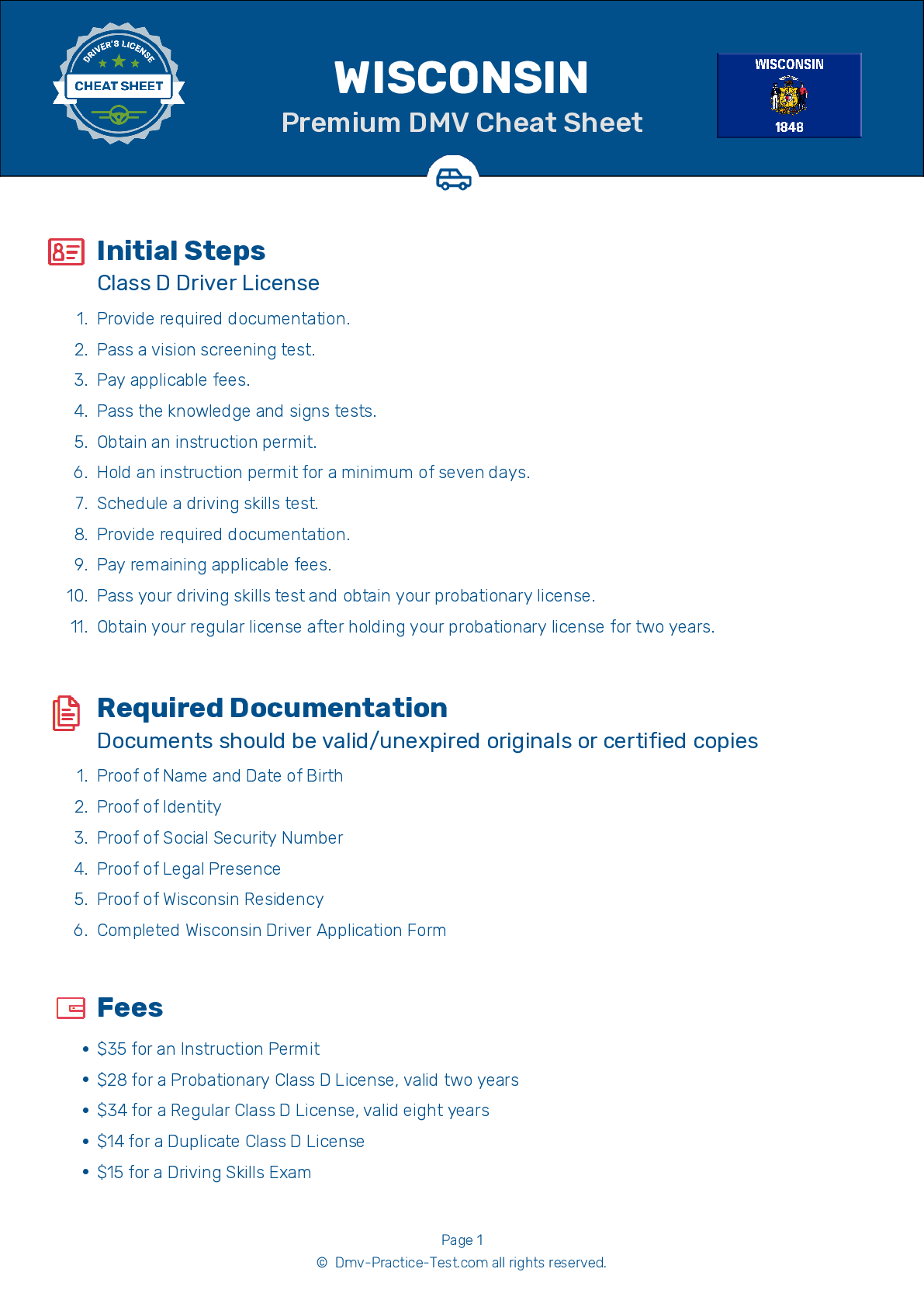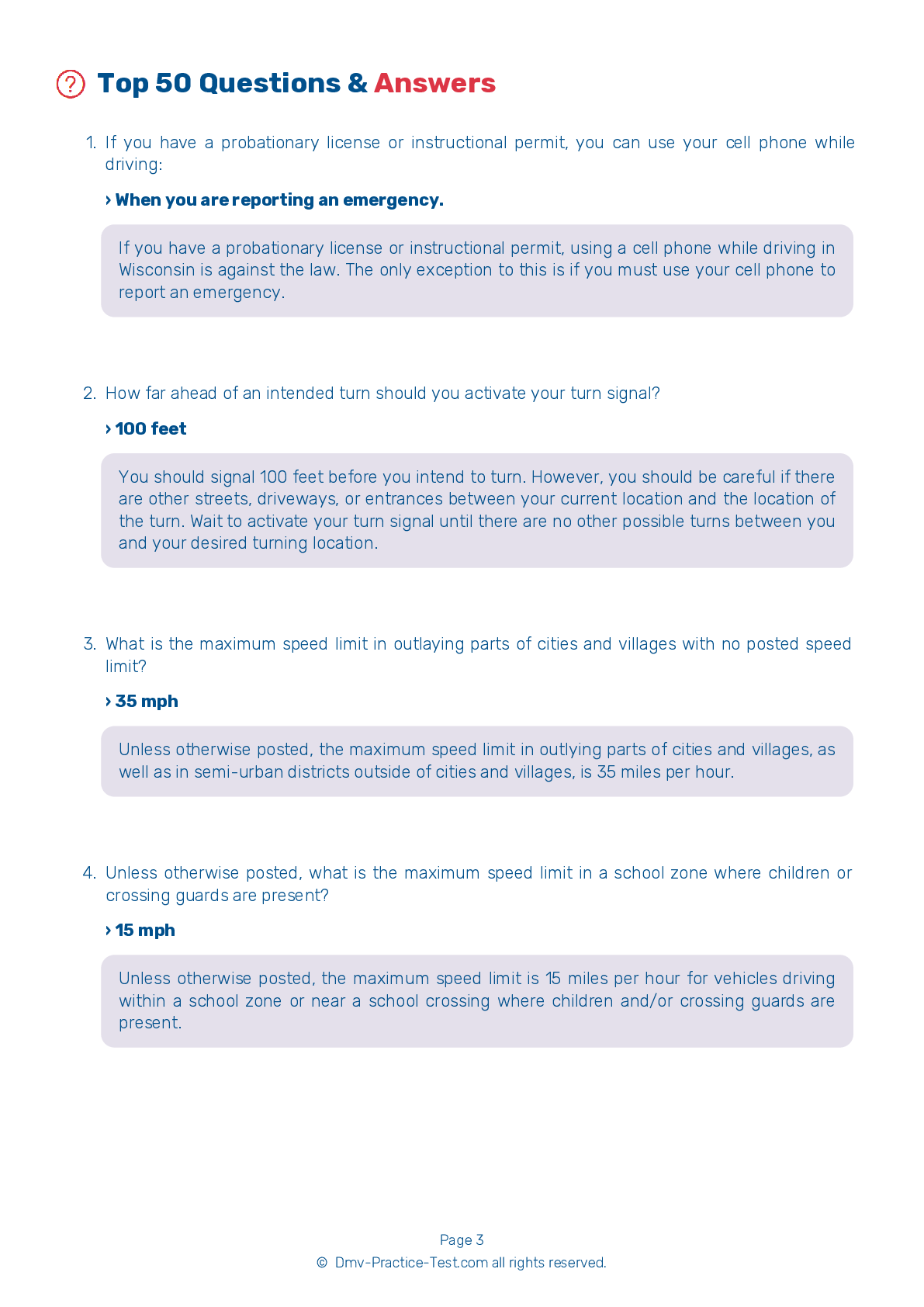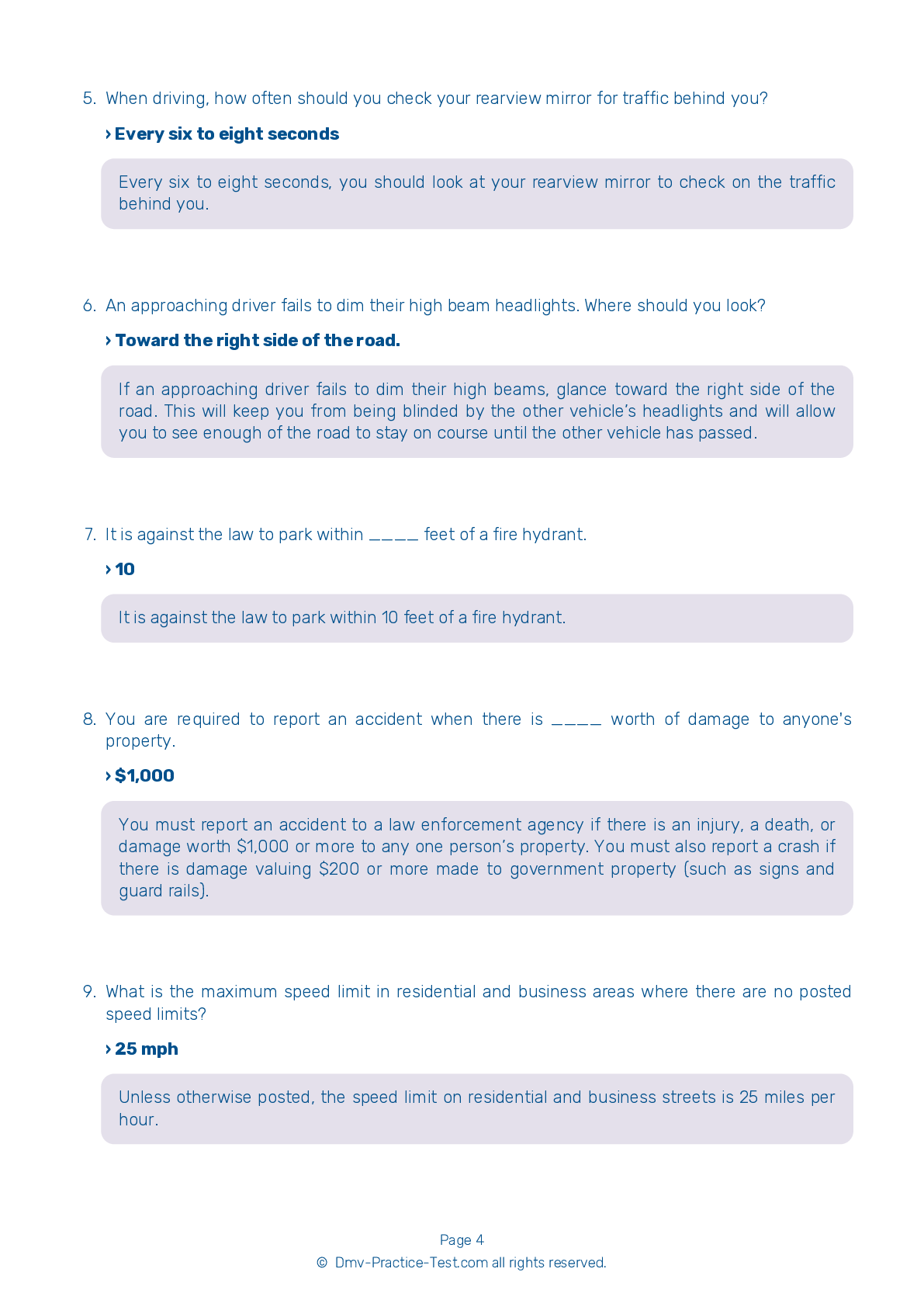FREE Wisconsin DMV Practice Test #22 Page 2 of 7
The Wisconsin DMV practise examinations have been updated for January 2025. It includes questions based on the Wisconsin Driver Handbook's most significant traffic signals and legislation for 2025. Use actual questions that are very similar (often identical!) to the DMV driving permit test and driver's licence exam to study for the DMV driving permit test and driver's licence exam.
On the practise exam, each question gets a tip and explanation to help you remember the concepts. The written component of the official Wisconsin DMV test will include questions about traffic rules, traffic signs, and driving statutes, as well as knowledge from the Driver Handbook.
To obtain a passing grade, you must correctly answer 40 of the 50 questions. Use the practise exam provided by the Wisconsin Department of Motor Vehicles to help you prepare for your instruction permit or driver's licence.
The DMV exam is available in several languages.
Using any kind of testing assistance will result in an automatic fail, and the DMV may take additional action against your driver's licence, so stay away from it.
8 . When approaching an intersection that is controlled by a flashing red traffic signal, you must:
Treat a flashing red traffic signal the same as you would treat a stop sign. Come to a complete stop, yield to oncoming traffic or pedestrians, and proceed when the way is clear.
9 . You are approaching an intersection where a traffic signal is displaying a steady yellow light. If you have not already entered the intersection, you should:
At an intersection controlled by a steady yellow light, you should bring your vehicle to a safe stop. If you are already within the intersection when the light changes from green to yellow, continue through the intersection at a safe speed.
10 . To avoid glare from the headlights of an approaching car:
You should avoid looking toward the bright lights of an oncoming vehicle by glancing toward the right side of the road. After looking briefly toward the side of the road, continue looking ahead to check on the position of the other vehicle.
11 . Which of the following commonly causes traffic accidents?
Driving too fast for conditions is a major cause of motor vehicle crashes. Being inattentive to surroundings can cause a driver to collide with other vehicles. Most rear-end collisions are caused by drivers following other vehicles too closely.
12 . To safely pass a bicycle, you should:
When passing a bicyclist, slow down and give them as much space as you can. Bicyclists have much less protection than drivers of motor vehicles and they should not be crowded. Passing a bicycle too quickly can shift the bicyclist off-course.
13 . What kinds of drugs can affect your driving ability?
Many kinds of drugs can impair your ability to drive. This includes illegal drugs and legal prescription or over-the-counter medications. It can be a criminal offense to drive while impaired by any drug.
14 . If you reach an intersection where you wish to turn but you are not in the proper lane, you should:
Never make last-minute turns. If you reach an intersection where you wish to turn but you are not in the proper lane to make the turn, drive to the next intersection and then make the turn from the proper lane.
See the exact questions that will be on the 2025 Wisconsin DMV exam.
99.2% of people who use the cheat sheet pass the FIRST TIME
LT gives us an insight on how the cheat sheet provided her with all the study questions she needed before taking her test.
Joe initially studied with the handbook and failed his test, he eventually found us online, studied and pass his test the first time around.



